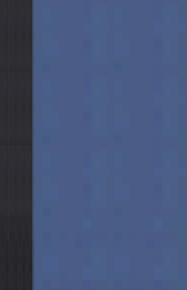Library Catalog
Start on the Classic Catalog page to search for books. Click on the tab on the QuickSearch box on the main library webpage, or click this link.
This link is to the Library of Congress (LC) guide that explains how books are organized in UW Libraries. It is difficult to simply shelf browse looking for books. You need to use the catalog until you gain a better idea of where the books you might want are located. When you find one useful book, be sure to look to the left and right, as well as up and down to see other titles organized by that subject listing.
Subject listings are a useful way to find related books on a topic.
If the UW Libraries do not have the book (either checked out or not in the collection), click on the "Prospector" button to repeat the search in our partner libraries in Colorado. The "Prospector" system is the quickest way to borrow books. Please note that borrowing ebooks is possible but difficult. It is often better to try to get a print copy.
If the Prospector system does not have the title you want, search for the book in libraries nationwide using the "WorldCat FirstSearch" database. When you find a book you want, locate the brown and gold "UW Loan" link on the page to initiate an interlibrary loan (ILL). If you are unfamiliar with ILL, click this link to learn more.
Search QuickSearch Scopes
|
Library Search/Retrieval Options
UW Libraries QuickSearch: includes the collections of the University Libraries, UW Law Library, and the American Heritage Center.
Prospector: a unified catalog of twenty-three academic, public and special libraries in Colorado and Wyoming. UW students, faculty and staff can borrow materials from Prospector.
![]() Interlibrary Loan: UW students, faculty and staff can request books, journal volumes, journal articles and other materials, regardless of whether it is available in the UW Libraries, online or in libraries around the world. A free service!
Interlibrary Loan: UW students, faculty and staff can request books, journal volumes, journal articles and other materials, regardless of whether it is available in the UW Libraries, online or in libraries around the world. A free service!
Useful Reference Books
Reference books such as unique encyclopedias or dictionaries are a fantastic way to locate background information. The articles are written by subject-matter experts and are very useful for identifying people, places, and events. If you find a useful source, be sure to check the bibliography for the sources.
Here are a few recommended titles available at UW Libraries.
Makers of Modern Strategy from Machiavelli to the Nuclear Age by
Call Number: U 162 .M25 1986ISBN: 0691027641Publication Date: 1986-03-21Harper Encyclopedia Military History by
Call Number: D25 .D86 1993ISBN: 0062700561Publication Date: 1993-05-01The Encyclopedia of Military History by
Call Number: D25.A2 D8 1986ISBN: 0061812358Publication Date: 1986-06-01 Encyclopedia of military technology and innovation (ebook) by Call Number: ebookPublication Date: 2004
Encyclopedia of military technology and innovation (ebook) by Call Number: ebookPublication Date: 2004 Encyclopedia of Invasions and Conquests by Call Number: D25.A2 D38 2016ISBN: 9781682171004Publication Date: 2016-11-01
Encyclopedia of Invasions and Conquests by Call Number: D25.A2 D38 2016ISBN: 9781682171004Publication Date: 2016-11-01
Books with Primary Sources
One way to identify books that are primary sources is to look for books written by people who were involved in the event or activity you are researching. When you look at secondary sources, write down the names of people and then look for them as authors.
In the UW Libraries Catalog, books that have been assigned subject heading could be primary sources. Use the library catalog "Subject" search to locate items. Consider using some of the following subheadings in a search.
--Diaries
--Correspondence
--Biography
--Sources
--Anecdotes
--Personal narratives
--Interviews
Examples:
Fighter Pilots -- United States -- Biography
Soldiers -- Alabama -- Correspondence
War Correspondents -- United States -- Interviews
African American Sailors -- Diaries
Vietnam War, 1961-1975 -- Personal Narratives, American
United States. Army. Women's Army Corps -- Biography
World War, 1939-1945 -- Cryptography -- History -- Sources
For information about the difference between primary and secondary sources, refer to this guide.
